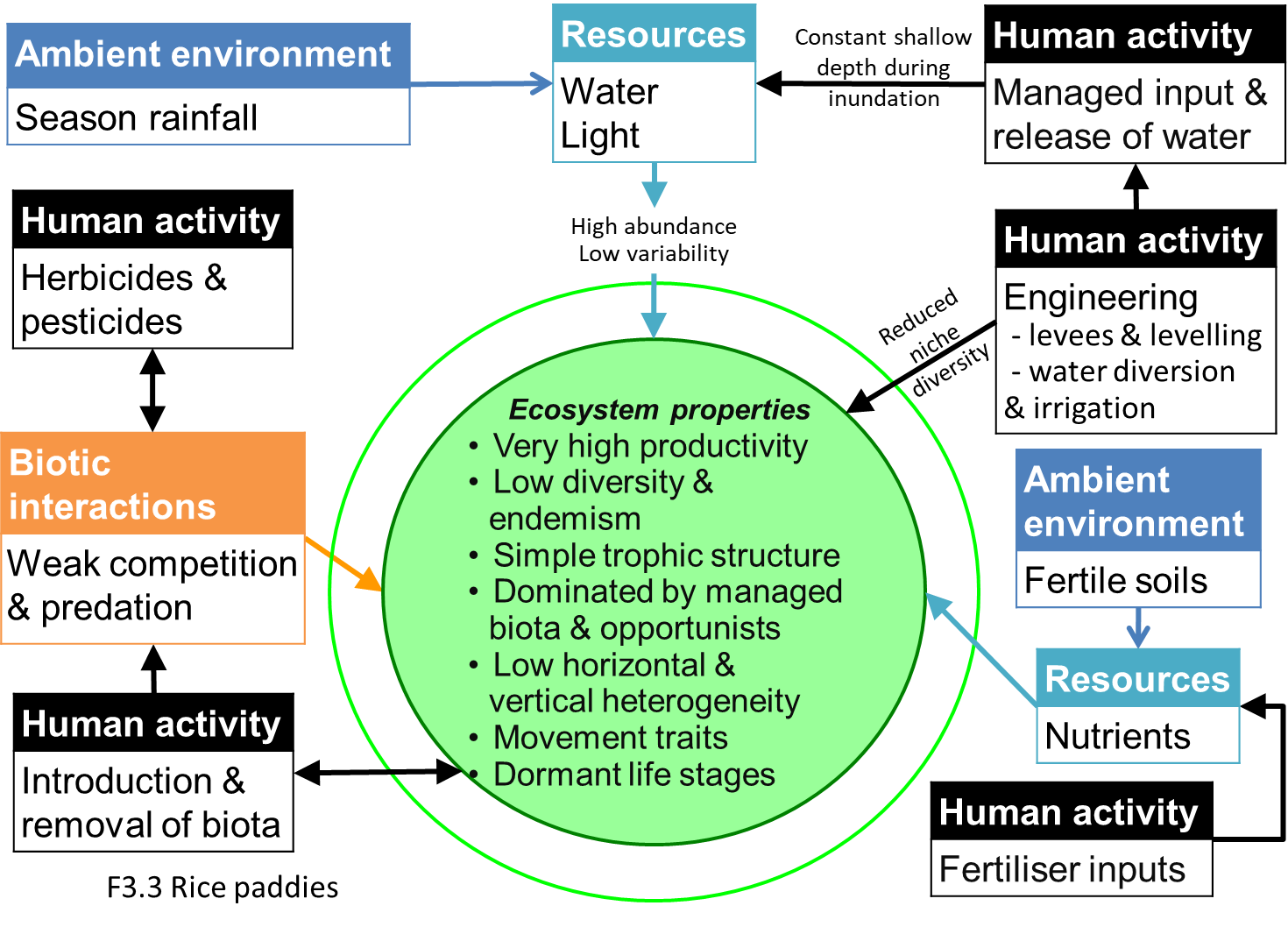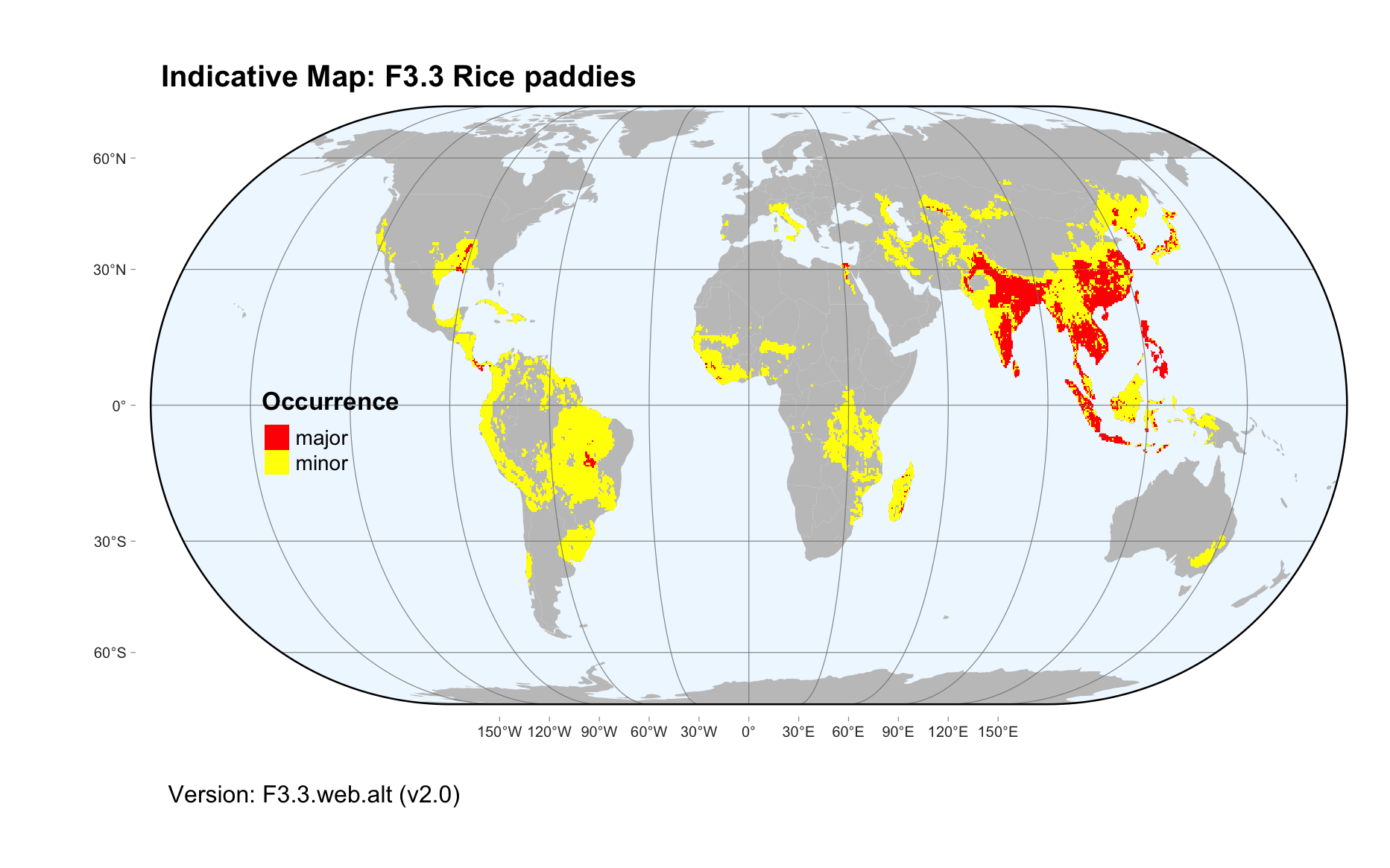Global ecosystem typology
Alternative site for the Global ecosystem typology with additional information for ecosystem profiles and indicative maps.
This site is maintained by jrfep
F3.3 Rice paddies
Biome: F3. Artificial wetlands biome
Contributors:
(texts)
Rice paddies cover more than a million square kilometres mostly in tropical to warm temperate climates, especially Southeast Asia. They are filled by rainfall or river water diversions. Their levees and channels retain shallow water areas, with nutrients inputs from inflows and fertilisers. Planting and harvest establishes a regular cycle of disturbance, with many paddies also supporting production of fish and crustaceans, Their simple foodwebs are adapted to temporary flooding and the harvest cycle, including algae and plankton, waterbugs, frogs and waterbirds.
Key Features
Artificial wetlands with limited horizontal and vertical heterogeneity, filled seasonally with water from rivers or rainfall and frequently disturbed by planting and harvest of rice. Simple trophic networks with colonists from rivers and wetlands that may also include managed fish populations.
Overview of distribution
Mostly in tropical and subtropical southeastand south Asia, also in Africa, Europe, South America, North America and southeast Australia.
Profile versions
- v1.0 (2020-01-20): RT Kingsford; DA Keith
- v2.0 (2020-06-18): RT Kingsford; DA Keith
- v2.01 ():
- v2.1 (2022-04-06): RT Kingsford; DA Keith Full profile available at official site
Main references
Selected references for this functional group:
Fernando CJH (1993) Rice field ecology and fish culture—an overview Hydrobiologia 259: 91-113
Liesack W, Schnell S, Revsbech NP (2000) Microbiology of flooded rice paddies FEMS Microbiology Reviews 24: 625-645 DOI:10.1111/j.1574-6976.2000.tb00563.x
Diagrammatic assembly model

Maps
Maps are indicative of global distribution patterns are not intended to represent fine-scale patterns. The maps show areas of the world containing major (coloured red) or minor occurrences (coloured yellow) of each ecosystem functional group. See general notes on maps.
There are 2 alternative versions of the indicative map for this functional group, please compare description and sources below.
F3.3.IM.alt_v2.0
Datasets
- Anthromes-v2.0
Map references
Monfreda CN, Ramankutty N, Foley JA (2008) Farming the planet: 2. Geographic distribution of crop areas, yields, physiological types, and net primary production in the year 2000 Global Biogeochemical Cycles 22: GB1022
F3.3.web.alt_v2.0

Datasets
- Anthromes-v2.0
Map references
Monfreda CN, Ramankutty N, Foley JA (2008) Farming the planet: 2. Geographic distribution of crop areas, yields, physiological types, and net primary production in the year 2000 Global Biogeochemical Cycles 22: GB1022
Check: the Glossary / Profile structure / the public document